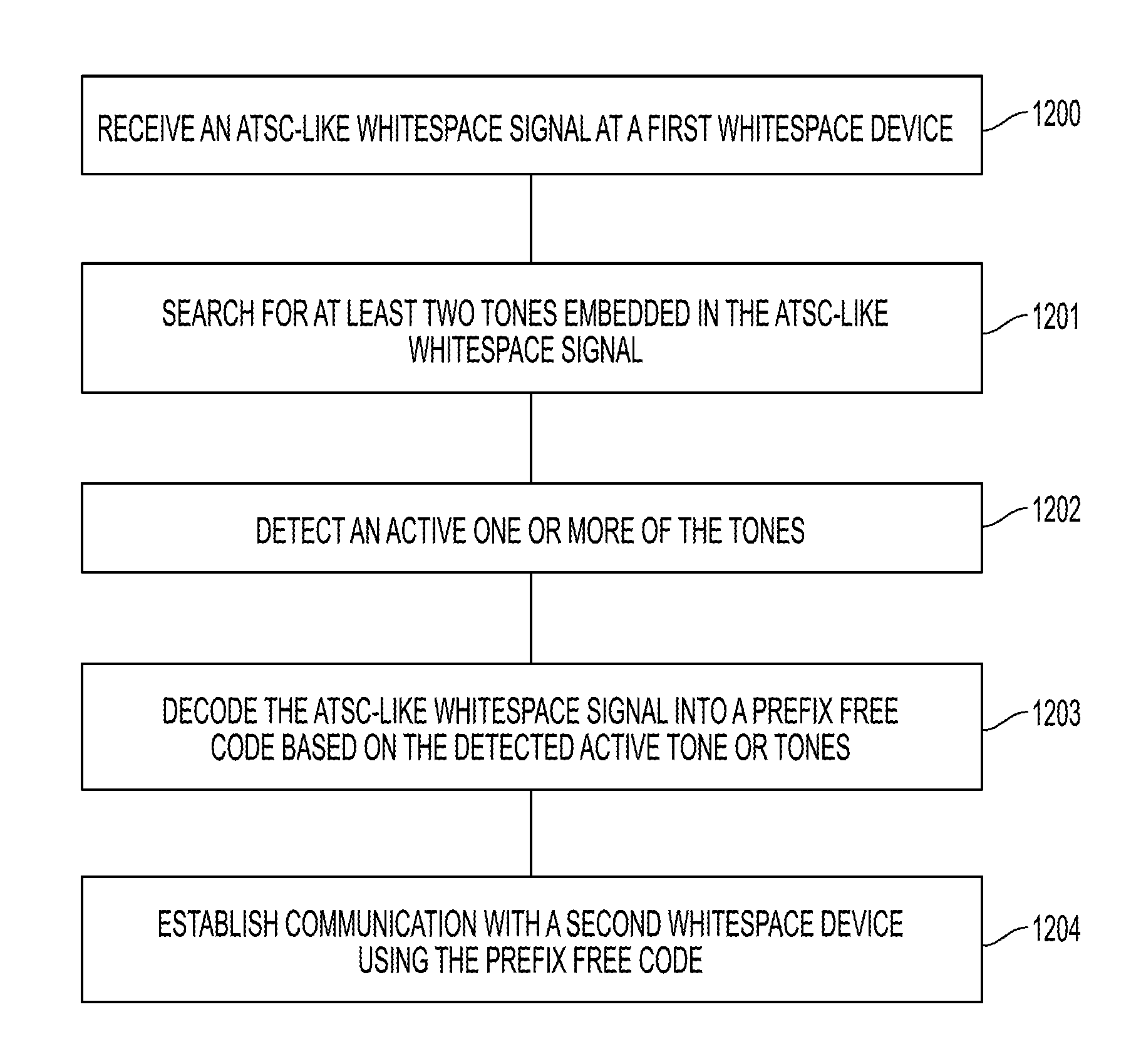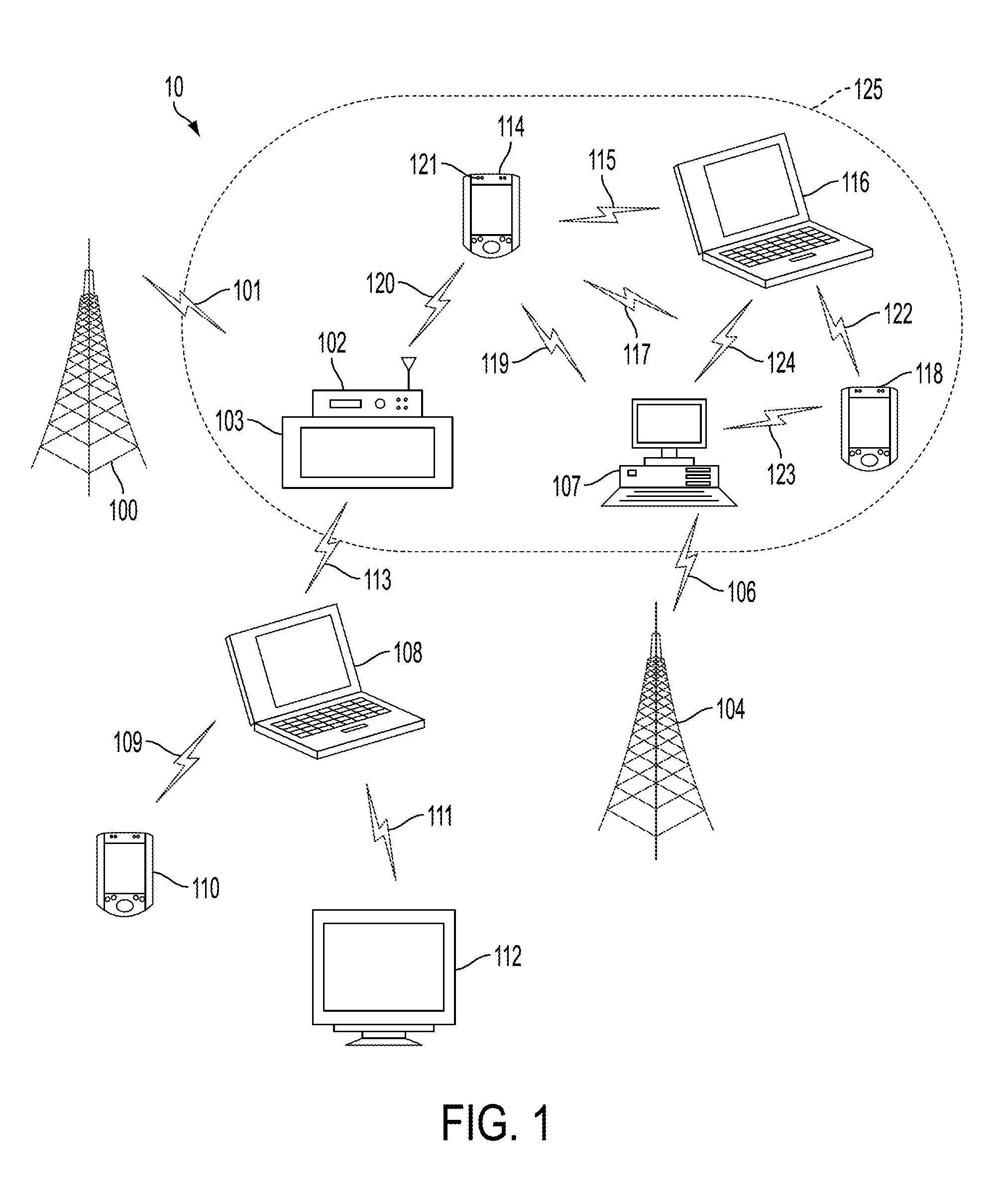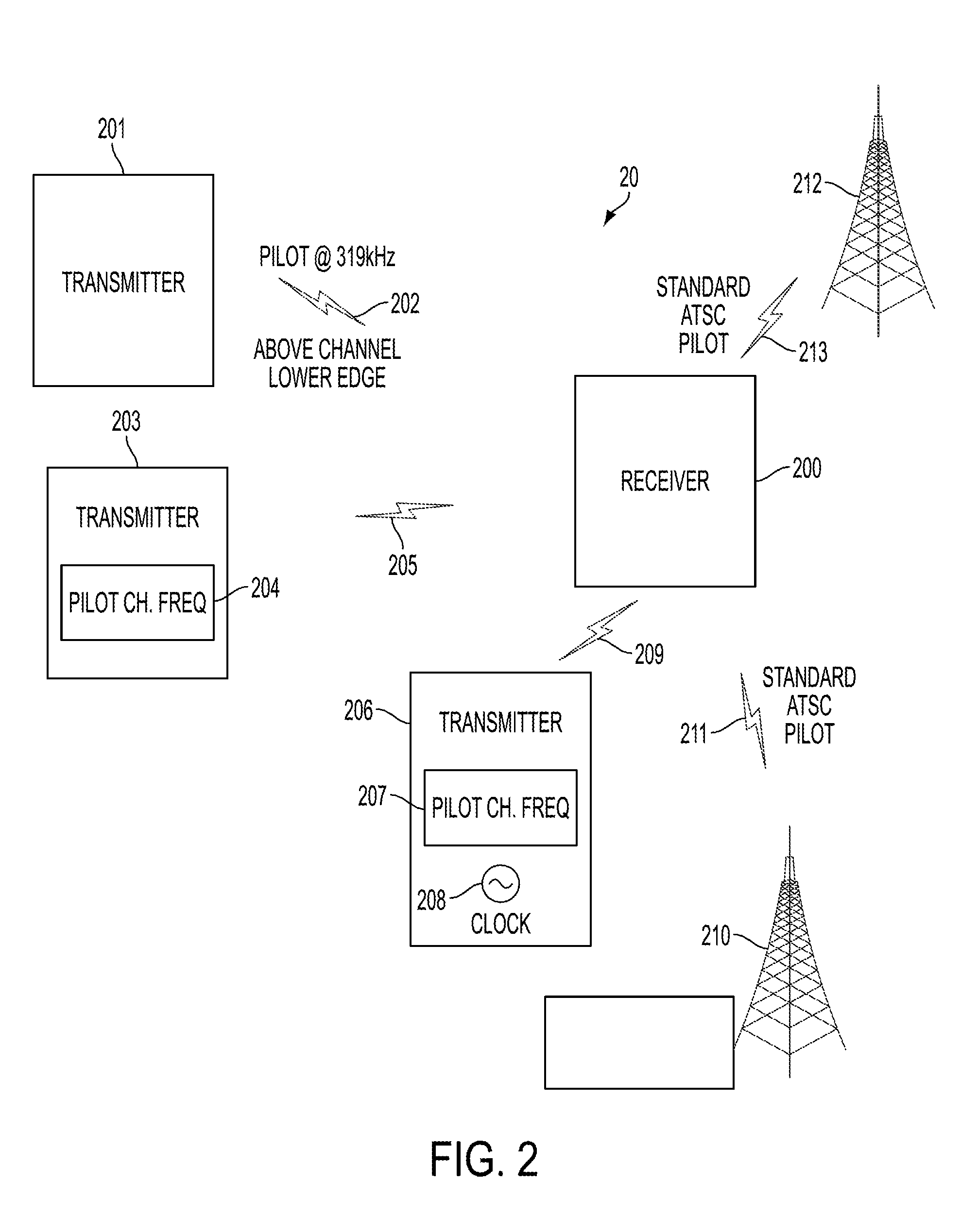Distinguishing and communicating between white space devices transmitting atsc-compatible signals
- Summary
- Abstract
- Description
- Claims
- Application Information
AI Technical Summary
Benefits of technology
Problems solved by technology
Method used
Image
Examples
Embodiment Construction
[0036]Cognitive radios operate a system of wireless communication in which either a network or a wireless node changes its transmission or reception parameters to communicate efficiently while avoiding interference with licensed users also called primary users. However, in the proposed TV white space, the white space devices will be using ATSC-compatible signals, which may be indistinguishable from the other ATSC broadcast signals. For purposes of this disclosure, unlicensed ATSC-compatible signals will be referred to as “white space signals,”“unlicensed signals,”“ATSC-like signals,” and the like. Without the ability to distinguish between compatible signals, not only is the frequency re-use pattern limited, it may be difficult, if not impossible, to establish full network communication between other unlicensed white space devices. Therefore, simple spectrum sensing techniques and other current cognitive network techniques may be inadequate to make as full a use of the TV white spac...
PUM
 Login to View More
Login to View More Abstract
Description
Claims
Application Information
 Login to View More
Login to View More - R&D
- Intellectual Property
- Life Sciences
- Materials
- Tech Scout
- Unparalleled Data Quality
- Higher Quality Content
- 60% Fewer Hallucinations
Browse by: Latest US Patents, China's latest patents, Technical Efficacy Thesaurus, Application Domain, Technology Topic, Popular Technical Reports.
© 2025 PatSnap. All rights reserved.Legal|Privacy policy|Modern Slavery Act Transparency Statement|Sitemap|About US| Contact US: help@patsnap.com



